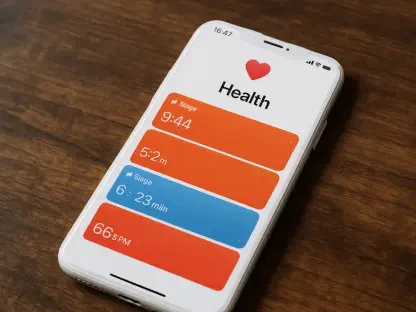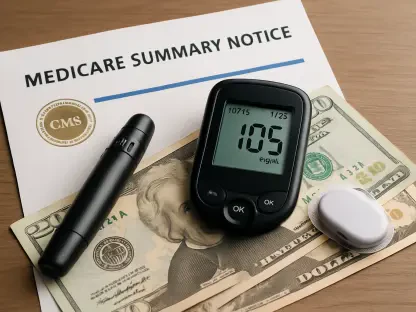I’m thrilled to sit down with James Maitland, a renowned expert in robotics and IoT applications in medicine. With a deep passion for harnessing technology to revolutionize healthcare, James has been at the forefront of integrating cutting-edge solutions to address some of the industry’s most pressing challenges. In this conversation, we explore the urgent need for transformation in healthcare, the role of AI and digital tools in reshaping care delivery, and the hurdles and hopes for a more accessible and sustainable future.
How do you view the current state of healthcare in terms of affordability and access, and what do you see as the most critical challenges?
Honestly, the healthcare system is at a crossroads. Affordability is a massive issue—costs keep rising for patients and providers alike, often outpacing inflation. Access is just as troubling; many people, especially in rural or underserved areas, struggle to get timely primary or specialty care. The biggest challenge is the systemic inefficiency—fragmented care delivery, outdated processes, and a reactive approach to health rather than a preventive one. Without addressing these root issues, we’re just putting band-aids on a much deeper wound.
Do you share the concern that these challenges could intensify over the next few years if significant changes aren’t made?
Absolutely, I do. If we continue on this trajectory, financial pressures on providers will only worsen—hospitals and clinics are already operating on razor-thin margins. Access gaps will widen as demand grows and resources shrink. We’re also seeing a workforce crisis with burnout and shortages. Without a major shift toward proactive care and smarter resource use, I fear we’ll see a system that’s even less equipped to meet patient needs in five years.
How urgent is the need for healthcare to pivot from reacting to illness to proactively managing health?
It’s incredibly urgent. We’re long past the point of tinkering around the edges. A reactive model just isn’t sustainable—by the time patients seek care, conditions are often more complex and costly to treat. Proactive management, supported by technology like predictive analytics, can identify risks early and intervene before issues escalate. This isn’t just about better outcomes; it’s about saving resources and making healthcare more equitable. The urgency is now because every delay compounds the problem.
What financial pressures on healthcare providers concern you the most right now?
I’m most worried about the unsustainable cost structures providers face. Reimbursement rates often don’t cover the actual cost of care, especially for complex cases or in underfunded regions. Add to that the rising expenses for technology, staff, and infrastructure, and you’ve got a recipe for financial distress. Many providers are forced to cut services or merge just to survive, which can reduce access for patients. It’s a vicious cycle that needs breaking.
How do you see the issues of clinical workforce shortages and burnout playing out in the near future if no major interventions happen?
If we don’t act, it’s going to get grim. We’re already seeing a shrinking pipeline of clinical workers—fewer people are entering the field due to long hours, stress, and better-paying options elsewhere. Burnout is rampant; providers are overworked and bogged down by administrative tasks. In the next few years, I predict more early retirements and resignations, which will strain capacity further. Patient care will suffer as wait times grow and quality dips. It’s a crisis we can’t ignore.
What role do you think AI and digital technologies can play in transforming key aspects of care delivery?
AI and digital tools are game-changers. They can revolutionize areas like diagnostics, where AI can analyze data faster and often more accurately than humans, leading to earlier interventions. In care navigation, these technologies can streamline patient triage, ensuring people get to the right provider at the right time. They also free up clinicians from paperwork through automation, letting them focus on patients. I’ve seen IoT devices enable remote monitoring, which transforms how we manage chronic conditions. The potential to improve efficiency and outcomes is enormous.
In what ways can AI help make healthcare more affordable for patients?
AI can drive down costs in several ways. By optimizing workflows, it reduces administrative overhead, which often gets passed on to patients. Predictive models can prevent expensive hospital readmissions by flagging at-risk individuals early. AI can also support personalized treatment plans, avoiding unnecessary tests or procedures. For example, in resource allocation, AI can match supply with demand more effectively, cutting waste. Ultimately, these efficiencies can lower the financial burden on both providers and patients.
What challenges have you encountered when integrating AI tools into healthcare settings?
The challenges are significant. First, there’s the issue of data quality and interoperability—many systems don’t talk to each other, so AI tools struggle to access comprehensive patient info. Then there’s resistance to change; some clinicians worry about being replaced or distrust the tech. Implementation costs are high, and there’s a steep learning curve. Privacy and security are huge concerns too—ensuring patient data is protected while using AI is non-negotiable. It’s a complex process that requires careful planning and stakeholder buy-in.
How do you see AI tools for capacity and referral management helping balance patient demand with available resources?
These tools are incredibly promising. They can analyze patterns in patient demand and provider availability in real-time, ensuring resources are allocated where they’re needed most. For instance, AI can predict peak times for certain services and help redirect patients to less busy facilities or virtual care options. In referral management, it can prioritize urgent cases and match patients with the right specialists faster. This cuts wait times, reduces bottlenecks, and maximizes the system’s capacity to serve more people effectively.
What is your forecast for the future of AI and digital innovation in healthcare over the next decade?
I’m optimistic but realistic. Over the next ten years, I expect AI and digital tools to become deeply embedded in healthcare, from routine diagnostics to personalized medicine. We’ll see more seamless integration of IoT for real-time health monitoring, making remote care the norm for many. AI will likely take over most administrative tasks, freeing up clinicians for patient interaction. However, the pace will depend on overcoming barriers like regulation, funding, and public trust. If we get it right, we’re looking at a system that’s more efficient, equitable, and patient-centered than ever before.









